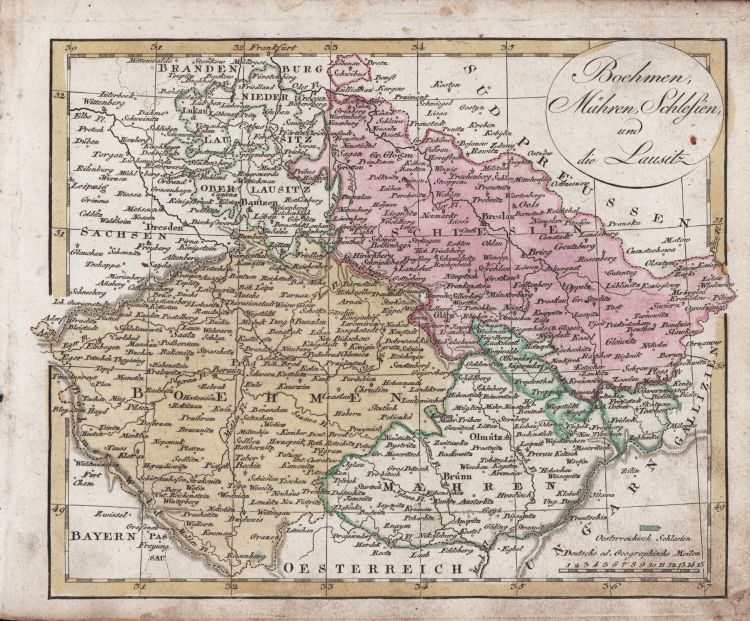


| Reference: | MS1757 |
| Author | Johann WALCH |
| Year: | 1820 ca. |
| Zone: | Bohemia |
| Printed: | Augsburg |
| Measures: | 235 x 190 mm |


| Reference: | MS1757 |
| Author | Johann WALCH |
| Year: | 1820 ca. |
| Zone: | Bohemia |
| Printed: | Augsburg |
| Measures: | 235 x 190 mm |
Map taken form the Atlas printed in Augsburg, circa 1820.
Copperplate, original colouring, good condition.
Johann WALCH Kempten 1757 - Augsburg 1815)
|
After completing a degree in art in Vienna and a two-year stay in Rome, the painter Johannes Walch (1757-1815) from Kempten probably returned to Augsburg in 1785 after spending some time there. In January 1786 he marries Johann Martin Will's eldest daughter Anna Regina and from then on worked in his publishing house. The meeting of Will and Walch in Augsburg should not have been a coincidence, after all, both came from the same city. Will probably Walch's father, a major Kempten merchant and Councilman, who maintained intensive trade relations with Augsburg. A few years after Walch's entry into the office of his father-in-law, the real turning point became map-production without, however, abandoning the other divisions. That the reason for this was probably a personal inclination of Johannes Walch to the map-engraving, is unlikely, because for an academically educated painter, the reproduction and compilation of maps should have offered little scope for free artistic development.
|
Johann WALCH Kempten 1757 - Augsburg 1815)
|
After completing a degree in art in Vienna and a two-year stay in Rome, the painter Johannes Walch (1757-1815) from Kempten probably returned to Augsburg in 1785 after spending some time there. In January 1786 he marries Johann Martin Will's eldest daughter Anna Regina and from then on worked in his publishing house. The meeting of Will and Walch in Augsburg should not have been a coincidence, after all, both came from the same city. Will probably Walch's father, a major Kempten merchant and Councilman, who maintained intensive trade relations with Augsburg. A few years after Walch's entry into the office of his father-in-law, the real turning point became map-production without, however, abandoning the other divisions. That the reason for this was probably a personal inclination of Johannes Walch to the map-engraving, is unlikely, because for an academically educated painter, the reproduction and compilation of maps should have offered little scope for free artistic development.
|